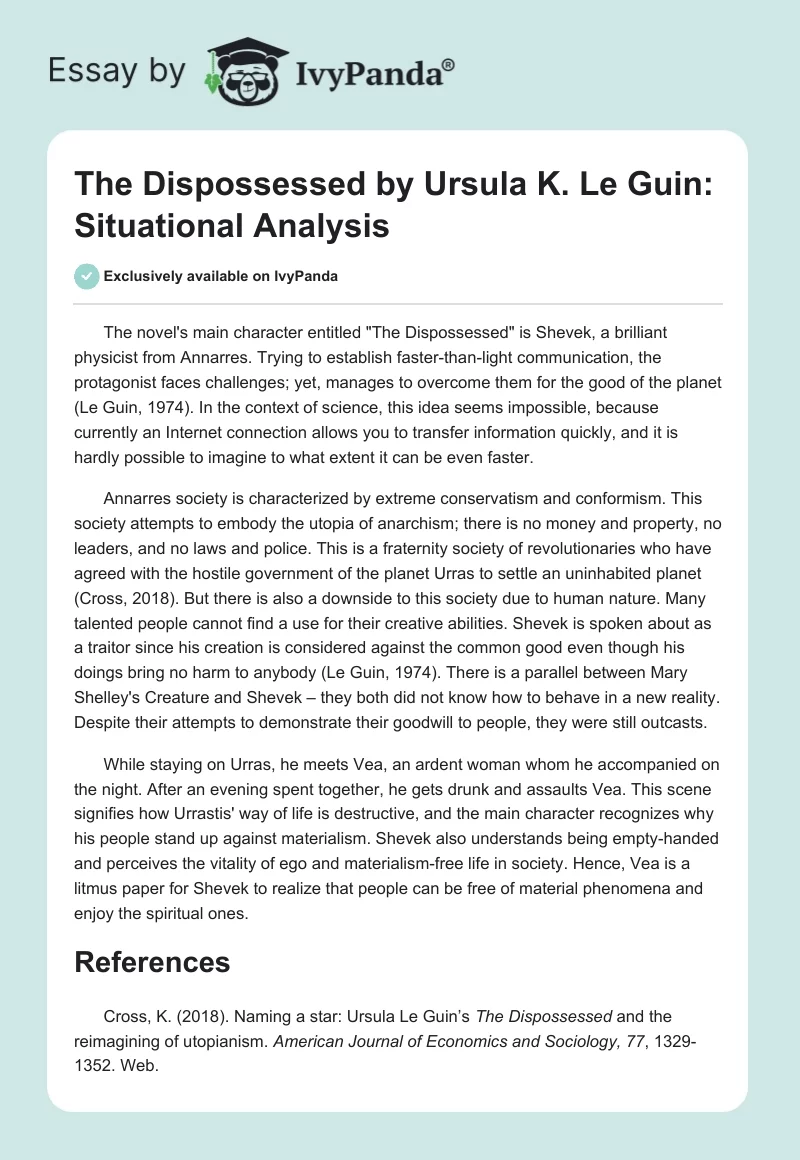The novel’s main character entitled “The Dispossessed” is Shevek, a brilliant physicist from Annarres. Trying to establish faster-than-light communication, the protagonist faces challenges; yet, manages to overcome them for the good of the planet (Le Guin, 1974). In the context of science, this idea seems impossible, because currently an Internet connection allows you to transfer information quickly, and it is hardly possible to imagine to what extent it can be even faster.
Annarres society is characterized by extreme conservatism and conformism. This society attempts to embody the utopia of anarchism; there is no money and property, no leaders, and no laws and police. This is a fraternity society of revolutionaries who have agreed with the hostile government of the planet Urras to settle an uninhabited planet (Cross, 2018). But there is also a downside to this society due to human nature. Many talented people cannot find a use for their creative abilities. Shevek is spoken about as a traitor since his creation is considered against the common good even though his doings bring no harm to anybody (Le Guin, 1974). There is a parallel between Mary Shelley’s Creature and Shevek – they both did not know how to behave in a new reality. Despite their attempts to demonstrate their goodwill to people, they were still outcasts.
While staying on Urras, he meets Vea, an ardent woman whom he accompanied on the night. After an evening spent together, he gets drunk and assaults Vea. This scene signifies how Urrastis’ way of life is destructive, and the main character recognizes why his people stand up against materialism. Shevek also understands being empty-handed and perceives the vitality of ego and materialism-free life in society. Hence, Vea is a litmus paper for Shevek to realize that people can be free of material phenomena and enjoy the spiritual ones.
References
Cross, K. (2018). Naming a star: Ursula Le Guin’s The Dispossessed and the reimagining of utopianism. American Journal of Economics and Sociology, 77, 1329-1352. Web.
Le Guin, U. K. (1974). The dispossessed. Harper & Row.


